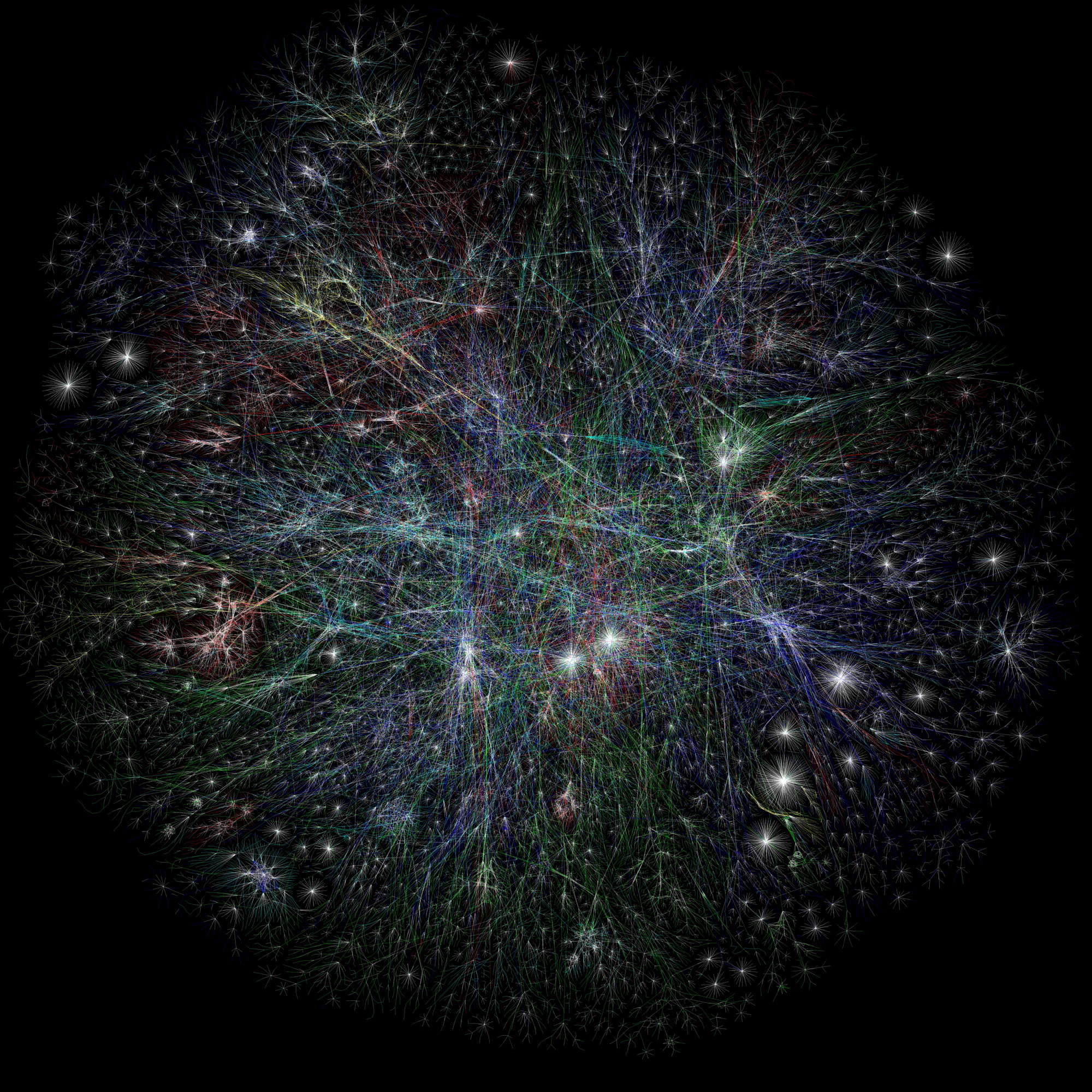 |
| Mapping the Internet, by Barrett Lyon. Part of MoMA's Architecture and Design collection. |
The central drawback of hairball-based visualization is that they cannot be tuned to address a user's specific questions. Implicit in the hairball approach is the assumption that all questions that the user wishes to answer are addressable by the layout algorithm. When this assumption is wrong (as it usually is), the user is left to construct another hairball, based on another layout algorithm, to attempt to answer the unanswered questions. Unfortunately, the set of questions answerable by a hairball is very difficult to determine — no such list exists because of the complex interplay of data and layout.So how do we reappropriate layout decisions to better answer questions relevant to our data?
- Develop a hypothesis
- Map the parameters of the hypothesis onto parameters governing the layout
- Run the layout algorithm
- Determine whether the hypothesis is correct
You'll notice that the common plug-and-chug method of implementing force-directed network graphs skips steps 1 and 2, which makes step 4 exceedingly hard. Remember, absent intervention, d3.layout.force knows only about connectivity, and there's usually more to the story. Look what the force-directed algorithm will let you do with the United States:
 |
| Force-directed layout of the United States, with initial positions seeded (source). |
In the next post, we'll discuss how to bring some intelligence to these visualizations so that they can be used to inform, rather than simply to decorate walls.
